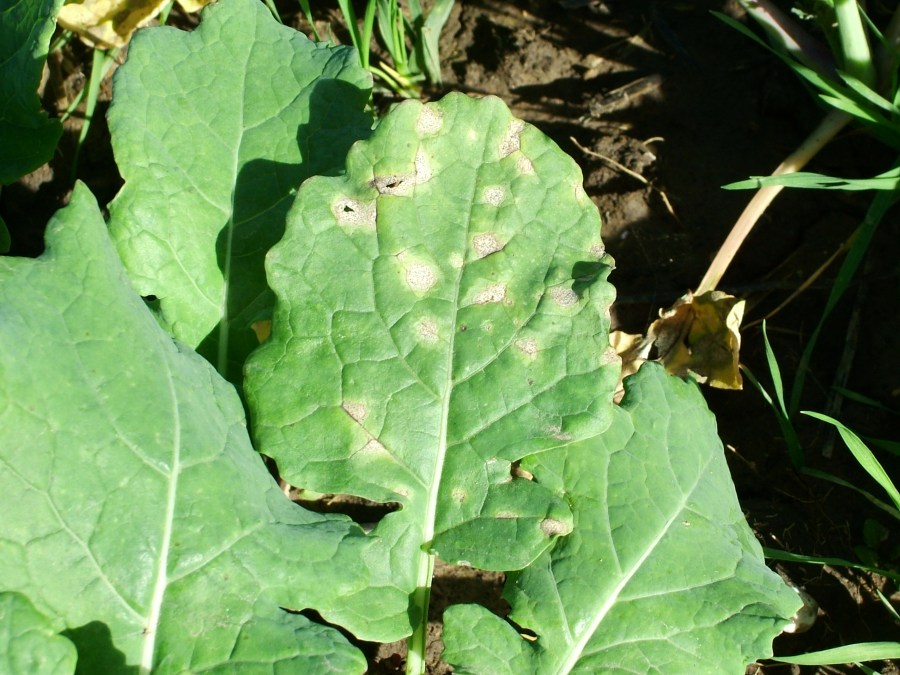The majority of oilseed rape-growing counties across the UK recorded positive results for light leaf spot disease in leaf samples sent to Bayer’s SpotCheck service from October 2020 to March 2021. Charlotte Cunningham reports.
The wet conditions in the autumn and winter drove early light leaf spot infections and despite the extended period of cold weather during late winter and early spring, disease was evident in a significant number of samples. Additionally, positive samples were received from crops across the UK, not just northern areas where the disease has historically been more prevalent.
The SpotCheck service is in partnership with ADAS and the Association of Independent Crop Consultants (AICC) and Philip Walker, plant pathologist at ADAS summarised the results from this cropping season. “The SpotCheck initiative ran from October 2020 to March 2021 and during that period 644 samples were assessed by ADAS.
“The percentage of positive samples after incubation increased over the winter and spring, with results in December showing 76% incidence, 68% in January, and 92% in February. In March, ADAS assessed 163 samples, with 97% showing positive signs of light leaf spot, despite the colder winter weather and many of these crops receiving an autumn fungicide application.”
The severity and incidence of light leaf spot varies from year to year, mainly according to the weather conditions. The disease can develop between 4 and 20°C with wet conditions ideal for disease infection and spread.
“This season the very wet late autumn and winter encouraged early infections, which drove disease levels,” added Ella Crawford, Bayer’s commercial technical manager. “And, despite the extended cool weather including snow and hard frosts in February and March, infections remained high into April. In fact, thanks to slow crop growth this spring and late stem-extension, we were still seeing infections in crops in May as crops came into flower.
“During March we saw a general trend for a high percentage of samples showing light leaf spot infection, and an increasing percentage of infection within fields. Out of the samples showing infection, 60% had levels of light leaf spot incidence above 50%.”
The increasing trend for early drilling to manage the threat cabbage stem flea beetle attack on establishing crops increases the risk from light leaf spot infection. Drilling new crops in close proximity to recently combined oilseed rape fields increases the threat from airborne ascospores, which can lead to early infection.
Prepare strategy
Growers can prepare their strategy to manage light leaf spot next season now, since it will be influenced by variety choice and drilling date.
According to Ella, plant genetics remains one of the best ways to reduce risk of light leaf spot developing in the crop as infection is most evident in susceptible varieties.
“Varieties with a resistance score of seven or higher, will afford some protection and lessen the reliance on chemistry alone,” She said. “This is particularly important when drilling early when extended exposure to the disease may require more robust fungicide programmes.”
Monitoring weather conditions can indicate when there is a high risk of disease, and alongside sampling of leaves, can support and justify fungicide decisions, suggests Philip.
He says, “As fungicides only provide protectant activity, growers should regularly walk crops during risk periods, looking for signs of disease. Sugar-like spores can be found on either side of the leaf, but are tiny, and often hard to spot. Incubating leaf samples at room temperature in a plastic bag for three days can encourage disease expression on the leaf surface, making identification easier. From October, send leaf samples to Bayer’s SpotCheck service for help with identification.”
For more on the SpotCheck initiative visit: cropscience.bayer.co.uk/spotcheck




